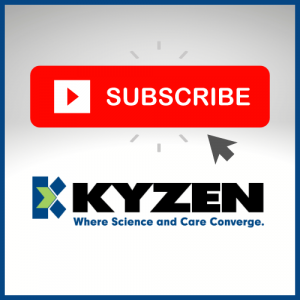The Science Lab
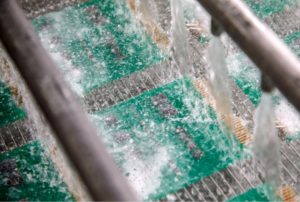
Understanding the Basics of PCB Cleaning
Electronics assembly or circuit board cleaning is important to consider for reliable and dependable products. No matter what your PCB cleaning process, getting the basics right is a great start. There are eight factors to consider to successfully clean circuit boards:
- Printed Circuit Board/Assembly to Be Cleaned: The part being cleaned, and the end result and customer expectations will drive the cleaning process.
- Soil(s): The type and make-up of the solder flux/pastes, the mix and the solubility of each soil will be a determining factor when developing a cleaning process.
- Processing Conditions: How your PCB is put together will affect the cleaning process – your reflow profile, how many times the assembly will see reflow and any other processes that will change the properties of the soil being removed.
- Bottom Terminated Components: Gap height and component pitch will be a driving factor when designing your cleaning process. Considering time, temperature, mechanical energy and solvency will lead to flux removal success.
- Material Compatibility: Part markings, metal interactions, component compatibility are key factors developing a cleaning process.
- PCB Cleaning Agent: A cleaning agent must be matched to the soils and the cleaning equipment.
- Harder to clean soils require stronger cleaning agents
- Poorly matched cleaning agent will not remove the soil
- Cleaning Machine: Choosing the right machine for your specific needs starts with your through-put expectations. You should also consider mechanical energy especially if you are cleaning complex assemblies.
- Process Control: Keeping your cleaning process balanced will provide consistent cleaning results and save money in the long run.
It is important to consider which reliable and dependable products will work best for your process, soil and machine. We offer cleaning chemistries for spray-in-air (batch and inline), ultrasonics as well as manual benchtop/rework cleaning. We can help you select the right cleaning solution to match your soil.
To find the best chemistries for your PCB cleaning process, click here. Additionally, learn more about PCB cleaning directly from a KYZEN cleaning expert; watch this Tech 2 Tech session by Regional Manager, Scott Cain.
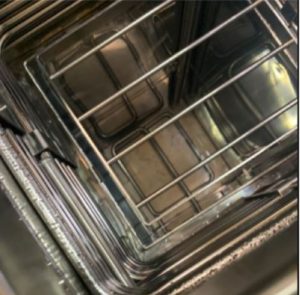 Best Practices for Vapor Degreasing
Best Practices for Vapor Degreasing
Good work practices play an important role in any emission control program. Failure to recognize this can reduce many of the benefits that would be expected from the use of state-of-the-art equipment, solvent recovery, and recycling measures.
The following are recommended operational and general work practices that play a major role in the successful operation of your vapor degreaser when cleaning critical advanced electronics.
EQUIPMENT CONSIDERATIONS:
There have been many advancements in containment technology for both new and retrofitted vapor degreasing equipment. Features that are commonly available are as follows:
- Higher freeboard that exceeds NESHAP Guidelines up to 150%
- Second set of low temps (0 to -20 F) condenser coils (freeboard chiller coils)
- Improved tank sealing covers (both manual and power operated)
- 3-4 angstrom molecular sieves rather than water separators for specific solvents
- Superheated vapor zones
- Automated work transporters to reduce operator interface and provide process control
CLEANING SYSTEM LOCATION:
A degreaser should be placed in an environment that is draft-free if possible. Vapor/air interfacial turbulence caused by drafts (velocity > 50 ft/ min) blowing into or, in the case of open-top units, over the top from fans, ventilators, etc. will greatly increase solvent losses.
WORKLOAD SIZE:
Processing workloads that exceed the systems design capabilities will also drag out excessive amounts of solvent into the atmosphere. A workload that is too large can displace vapor from the unit by the “piston effect”. To avoid these losses, the area of the workload should not be greater than 50% of the horizontal cross-sectional area of the sump into which it is being introduced.
Introduction of a workload that is too heavy will result in a collapse of the vapor blanket and introduction of air into the vapor blanket. During the reestablishment of the vapor blanket, the infiltrated air saturated with solvent vapors will be expelled from the equipment. This phenomenon is referred to as “work shock” and contributes to “fugitive emissions.”
FREEBOARD:
Freeboard is the ratio of the distance from the air/vapor interface to the top of the machine to the shortest dimension of the degreaser opening. For example, a degreaser with an opening of 1’x2’ where the distance from the air/vapor interface to the top of the machine is 1.5’ has a 150% freeboard. Using at least 125% freeboards on a vapor degreaser will help to reduce the loss through the top of the machine.
REFRIGERATION:
In most refrigeration cooled vapor degreasers today, there are two separate sets of cooling coils installed. The primary or lower set of coils controls the vapor level in the degreaser chamber. These coils should be typically set at 35°F to 40°F. The secondary or upper set of coils provides additional vapor containment control. They should be set to an operating temperature of 0°F to -25°F. The vapor level should be positioned in the center of the coils.
AUTOMATED WORK TRANSPORTER SYSTEM:
The largest contributor to solvent loss and consumption is typically the operator. Opening the top cover too quickly, drawing the work up through the vapor blanket too quickly, improper work racking, and improper use of a spray wand will all contribute to vapor exposure and solvent loss. Automated hoists and powered covers will greatly reduce the loss of solvent.
VAPOR DWELL TIME:
The workload should remain in the vapor zone after the final cleaning step until its temperature equals that of the vapor zone and vapor condensation on the part stops. Work withdrawn earlier than this will emerge wet with solvent condensate. This increases solvent consumption & fugitive emissive losses to the atmosphere.
LEAK CHECKING:
The importance of good maintenance cannot be stressed enough. All solvent systems should be checked regularly for leaks from pump seals, valves, pipe joints, gasket covers, sight glasses, and filter housings. The detection and repair of leaks early are essential for good emission control. Contact your KYZEN professional for recommended leak detection equipment.
GENERAL OPERATIONAL PROCEDURES:
To minimize solvent emissions during start-up, it is recommended that the following steps be used:
- Activate condenser cooling systems and check to ensure proper operation
- Open tank cover
- Check and adjust solvent levels in all compartments
- Activate heaters
- Wait until stable vapor blanket has been established before processing any work into the unit or activating spray wand
To shut down the unit, use the following procedure:
- Stop processing and clear the machine of all work
- Shutdown heaters
- Allow cooling systems to operate for extended period of time
- Activate sump cooling coils where provided
- Allow vapor blanket to collapse completely
- Close cover to isolate degreaser tank from ambient atmosphere
Implementing the best practices for this electronics process is crucial to the overall performance of the technology. Download these best practices here so you can review them anytime, anywhere.
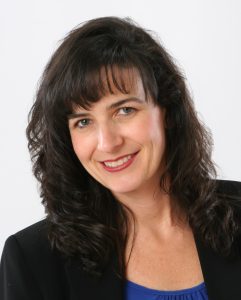 Debbie Carboni – Global Product Line Manager – Electronics
Debbie Carboni – Global Product Line Manager – Electronics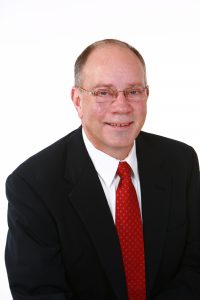 Chuck Sexton – Global Product Line Manager – Industrial
Chuck Sexton – Global Product Line Manager – Industrial Steer to Safe Cleaning Solvent Alternatives
Steer to Safe Cleaning Solvent Alternatives